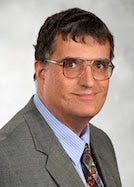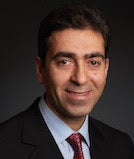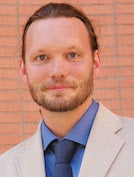“The Great American Eclipse”
Monday, Aug. 21, will mark the first coast-to-coast total eclipse in the United States in 99 years, and the first total eclipse that can be seen only from American soil in the history of the United States, prompting some to call the event “The Great American Eclipse.” USC experts discuss how best to enjoy this once-in-a-lifetime occurrence and what it might tell us about both our solar system and ourselves.
Contact: Ian Chaffee, (213) 810-8554 or ichaffee@usc.edu
NASA’s historic ‘near space’ live photo project
“The solar eclipse provides an opportunity for the public to experience a rare planetary phenomenon. Our live streaming from the atmosphere along with the other schools in the NASA space grant consortium will offer unique views in real time of this amazing event.
“It also provides an important set of conditions where we can study the effects of the sun on the atmosphere. As part of our research on eclipse day, we will collect data readings that scientists will compare against simulation results to understand our Earth.”
Michael Kezirian and USC students will help capture never-before-seen photos of a total solar eclipse from near space and assist other research related to the total eclipse as part of NASA’s nationwide eclipse ballooning project. They will be stationed at Idaho Falls, Idaho, one of the U.S. sites of totality. He can further discuss the eclipse ballooning project and the effect of the eclipse on different parts of the atmosphere and on earth. He is president of the International Space Safety Foundation and adjunct associate professor of astronautics at the USC Viterbi School of Engineering.
Contact: (800) 401-8271 or kezirian@usc.edu
Eclipses cause observable change
“Total solar eclipses mostly tell us about the structure of the solar corona and its influence on the solar wind and on the Interplanetary Magnetic Field.
“During the total solar eclipse of July 1991, that was also only visible as a partial solar eclipse here in Los Angeles, my students and I studied the drop in the Earth’s atmospheric temperature at Mount Wilson and several other locations across Southern California. We found a definite drop in the air temperature during that eclipse, and we published a paper that described these results.”
Edward Rhodes can discuss how researchers can use eclipses to learn more about our solar system, how they affect conditions here on Earth, the sun’s internal structure, best viewing and other topics related to the eclipse. He will also host an eclipse watch with his students the morning of Aug. 21 on USC’s University Park Campus that media are invited to attend.
He is a professor of astronomy at the USC Dornsife College of Letters, Arts and Sciences and the principal investigator and operator of USC’s 60-foot solar tower at Mt. Wilson.
Contact: (213) 740-6329 or erhodes@usc.edu
Airbnb’s big moment?
“With conventional hotel rooms likely being in rather short supply in some of the small towns and cities where the eclipse can best be observed, demand will vastly exceed supply.
“A lot of astronomy buffs who likely would never have thought of doing this before may find themselves trying Airbnb to scrounge up lodging. Available space will probably go for rather high rates.”
Lars Perner can discuss travel deals, comparison shopping and how flight and lodging pricing is affected by large-scale cultural and tourism events like the Great American Eclipse. He is an assistant professor of clinical marketing at the USC Marshall School of Business.
Contact: (213) 740-7127 or perner@marshall.usc.edu
Enjoy the eclipse safely
“Directly looking at the solar eclipse is as harmful as sun gazing on a regular day. This causes damage in the retina, the light-sensitive membrane in the back of the eye, and can result in vision loss, the severity of which depends on the duration of the gaze.
“In mild cases, the vision loss may be reversible over the course of several months, but in severe cases it is permanent. It affects the central vision — affected individuals may not be able to read or see faces — but it does not affect the peripheral vision.
“Here are some important tips to prevent vision loss while witnessing the solar eclipse:
1. Never look at the sun or solar eclipse without eye protection: Use solar eclipse glasses [eclipse viewers] that have been approved by the American Astronomical Society. In those areas of the country where total eclipse occurs, it is safe to remove this eyewear during total eclipse, which may last a maximum of about 2.5 minutes.
2. Sunglasses, no matter how dark, are not protective.
3. Do not use eclipse glasses that are damaged or have a scratch on them.
4. If using a binocular, camera or telescope, wearing eclipse glasses do not protect your eyes; the sun-facing front lens of the device should be shielded with specially designed filters.”
Hossein Ameri can discuss best safety practices for viewing the eclipse and the damage caused by looking directly at the sun. He is an assistant professor of clinical ophthalmology at the USC Roski Eye Institute at Keck Medicine of USC.
Contact: Sherri Snelling at (949) 887-1903 or sherri.snelling@med.usc.edu
The sun as symbol
“The idea of the ‘Great American Eclipse’ is a compelling one, full of metaphor and symbolism.
“Some have suggested that the eclipse is symbolic in bookmarking the global ascendancy of the U.S.: first in 1918 as a rising power, then in 2017 as a declining one. Some astrologists have been proclaiming this as a portent of the downfall of President Trump, who was born during a lunar eclipse.
“Regardless of whether one believes in astrology, throughout time, people have looked to the skies for notions of the cosmos and of our place in it. These notions have become deeply embedded in our culture and language.
“We still talk of the sunrise and the sunset, and of having a ‘sunny disposition.’ We divide our time into solar years and weeks, based on the movements of the seven historical celestial bodies: the sun, the moon and the five visible planets.
“During the rise of mythological studies during the late 1800s, the most prominent view was propounded by Max Müller (1823-1900), who championed a notion of ‘Solar Mythology,’ a theory that all mythology descends from sun worship.
“The accurate prediction of eclipses from many ancient cultures displayed a mastery of some of the secrets of the universe, and of time itself.
“Eclipses are symbolic anomalies of the highest order. Small wonder why eclipses continue to excite us. For most of us, this is our one chance to witness this major celestial event and, like many other people before us, muse on its import.”
Tok Thompson can discuss the symbolic importance of the sun and its place in folkloric history. He is an associate professor of anthropology and communication at the USC Dornsife College and studied at the University of California, Berkeley under Alan Dundes, considered by many to be the most important folklore scholar in the late 20th century. Thompson is currently working on a textbook and book series for Oxford University Press on world mythology, as well as a casebook titled “Posthuman Folklore.”
Contact: (213) 740-5195 or tokthomp@usc.edu
# # #








